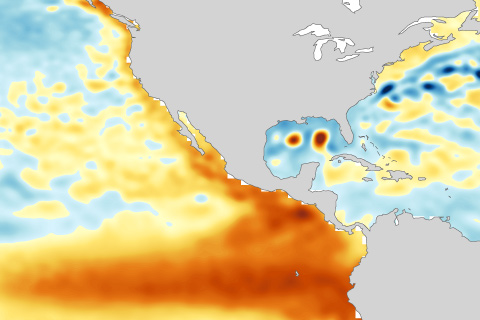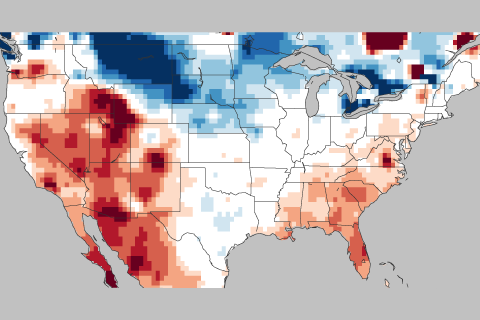
Amazingly, ENSO doesn't just impact climate anomalies like temperature and precipitation over the United States. It can also influence the sea level, which may have major implications as the sea level continues to rise in the future.

Wondering how strong any potential El Niño might be this winter? Maybe you should look to the South Pacific for clues.

Want to forecast both weather and climate? First this means understanding the faster and slower moving features of our atmosphere, ocean, and land.

In this week's ENSO blog, Tom DiLiberto gets all judgy over the 2017-2018 Winter Outlook—using science of course.

La Niña usually means a drier than average water year for California. So what happened in 2016-2017 when a weak La Niña coincided with a remarkably wet water year?

La Nina conditions appear to have peaked in strength and will likely last through the upcoming winter.

Herein lies the answer to the question you all have been asking: What about snow?

The Climate Prediction Center's Mike Halpert dives into the 2017-2018 winter outlook, and talks about how La Niña winters today are different from La Niña winters of the past.

The forecast of ENSO is not the only thing scientists use when making seasonal forecasts. This post looks at another predictor that often is even better to use than ENSO.

Record high sea levels and rainfall extremes have buffeted Hawaii and other U.S. Pacific islands this year.